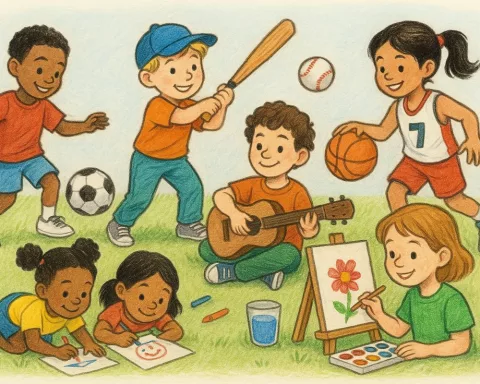Cape Town’s southern suburbs, known for their beauty and lively communities, faced a shocking wave of violence on April 8, 2025. Gunfire erupted in Kirstenhof, leaving one man dead and three others injured, while a double murder in Capricorn deepened the town’s grief. The police are struggling to find answers, and fear is spreading among residents. The roots of this violence go back to the painful history of apartheid, highlighting the need for better community ties, effective policing, and economic support to ensure safety and harmony in this vibrant area.
What caused the rise of violence in Cape Town’s southern suburbs?
The rise of violence in Cape Town’s southern suburbs stems from a combination of economic disparities, social tensions, and historical factors rooted in the apartheid era. Recent incidents, including shootings and murders, underscore the urgent need for community engagement, effective policing, and socio-economic development to enhance safety and cohesion.
Cape Town’s southern suburbs are known for their stunning landscapes and vibrant community life, often reflecting a harmonious blend of urban convenience and natural beauty. However, the night of April 8, 2025, shattered this tranquility with a series of violent episodes that quickly drew the attention of both local and international media.
Gunfire Erupts in Kirstenhof
The evening’s chaos began with an emergency call that summoned the South African Police Service (SAPS) to the intersection of Main and Military Roads in Kirstenhof. At around 19:15, the sound of gunfire prompted a swift police response. Arriving officers encountered a scene filled with panic and suffering. A 38-year-old man had been fatally shot, and medics provided urgent care to three other wounded individuals before transporting them to nearby hospitals.
Sergeant Wesley Twigg, speaking for the police, confirmed that detectives from Kirstenhof had initiated investigations into the cases of murder and attempted murder. “The motive for the attack is still unknown. The perpetrators fled the scene and have not yet been apprehended,” Twigg reported. His statement highlighted the uncertainty and fear permeating the community, intensifying local residents’ anxiety.
Double Murder in Capricorn
The violence continued, striking another blow to the southern suburbs. Muizenberg police responded to a distressing discovery in a residence on Apple Street, Capricorn. The lifeless bodies of two women, both victims of gunshot wounds, were found inside. Authorities quickly labeled the incident a double murder, adding another layer of tragedy to the night.
“The lack of information about motives and suspects only adds to the community’s distress,” Twigg said, encapsulating the community’s collective grief and confusion. Authorities issued a public call for any information that might assist in the investigation, urging citizens to contact Crime Stop or use the MySAPS mobile application anonymously. This appeal emphasizes the crucial role of community involvement in tackling the rising violence.
Violent Encounter on Prince George’s Drive
As the night wore on, yet another violent act unfolded, this time on Prince George’s Drive. A 42-year-old taxi driver became the target of an unprovoked assault. While waiting at a traffic light, an unknown assailant approached his vehicle and shot him in the abdomen. The urgency of his transport to a medical facility underscored the severity of his injuries, while the assailant’s escape added urgency to the investigation.
Steenberg detectives took charge, opening a case of attempted murder. “He was rushed to receive medical treatment, and the suspect remains elusive,” Twigg added. While this incident seemed unconnected to the previous shootings, it further illustrated the growing sense of insecurity in the suburbs.
Reflecting on Historical and Modern Contexts
Understanding the gravity of these events requires a look at Cape Town’s intricate history. The city has long been a microcosm of broader South African issues, including economic disparities and social tensions. Despite significant growth and development in the post-apartheid era, pockets of inequality persist, often manifesting in violent crime.
The roots of this violence trace back to the apartheid era, where systemic oppression and socio-economic disenfranchisement laid the groundwork for current challenges. Cape Town’s artistic and cultural movements have frequently reflected these struggles, using creative expression as a form of resistance and social commentary. The vibrant murals of the Bo-Kaap and the poignant productions of the Baxter Theatre are just two examples of how the city’s artistic scene engages with themes of violence, justice, and community resilience.
Community and Law Enforcement: A Collaborative Approach
In the wake of the recent violence, the importance of community collaboration in enhancing safety cannot be overstated. While law enforcement is essential, it alone cannot address the root causes of crime. Initiatives like community policing, neighborhood watch programs, and grassroots interventions have proven effective in various contexts.
The integration of technology in crime prevention also shows promise. Mobile applications like MySAPS enable anonymous reporting, empowering citizens to contribute to public safety without fear of reprisal. This technological advancement represents a modern iteration of community engagement, bridging traditional practices with contemporary solutions.
Urban Safety and Social Cohesion
The violent incidents of April 8 serve as a stark reminder of the fragile nature of urban safety, compelling a broader reflection on societal dynamics. Urban areas, while centers of opportunity and innovation, are also spaces where socio-economic tensions often erupt into violence.
Addressing these issues requires a multifaceted approach involving policy reforms, economic development, and social support systems. Investments in education, job creation, and fostering a culture of inclusivity are essential steps toward building resilient communities.
Additionally, the role of mental health support in preventing violence is critical. Accessible mental health services can mitigate factors contributing to violent behavior, offering individuals healthier ways to cope with stress and adversity.
The events of April 8, 2025, in Cape Town’s southern suburbs are a microcosm of broader societal challenges. They highlight the need for a comprehensive approach to urban safety, one that combines law enforcement with community involvement, technological innovation, and socio-economic progress. As Cape Town continues to evolve, the lessons from these incidents should inform efforts to create a safer, more equitable city for all its residents.
FAQ on the Rise of Violence in Cape Town’s Southern Suburbs
What caused the rise of violence in Cape Town’s southern suburbs?
The rise of violence in Cape Town’s southern suburbs is attributed to a mix of economic disparities, social tensions, and historical factors linked to the apartheid era. Recent violent incidents underscore the pressing need for community engagement, effective policing, and socio-economic development to improve safety and cohesion in the area.
What incidents occurred during the violence on April 8, 2025?
On April 8, 2025, several violent incidents shook Cape Town’s southern suburbs, including a shooting in Kirstenhof that left one man dead and three others injured, a double murder in Capricorn involving two women, and an attempted murder of a taxi driver on Prince George’s Drive. These events highlighted the escalating insecurity in the community.
How are law enforcement authorities responding to the violence?
The South African Police Service (SAPS) is actively investigating the recent violent incidents. Detectives are working on the cases of murder and attempted murder, with appeals for community assistance in providing any information that could lead to the apprehension of suspects. Efforts include using technology, such as the MySAPS mobile application, to facilitate anonymous reporting.
What role does the community play in enhancing safety?
Community involvement is crucial in addressing the root causes of violence. Initiatives such as community policing, neighborhood watch programs, and grassroots interventions have shown effectiveness in promoting safety. Citizens are encouraged to engage with law enforcement and utilize tools like the MySAPS app to report concerns anonymously.
How do historical factors contribute to the current violence?
The violence observed in Cape Town’s southern suburbs is deeply rooted in the legacy of apartheid, which created systemic oppression and socio-economic disenfranchisement. Although the city has seen growth since the end of apartheid, lingering inequality often manifests in violent crime, indicating the need for ongoing efforts in social and economic support.
What measures are necessary to prevent future violence?
Preventing future violence requires a multifaceted approach that includes policy reforms, economic development, and social support systems. Investments in education, job creation, and mental health services are vital to address underlying issues contributing to violence. Furthermore, fostering a culture of inclusivity is essential for building resilient communities and enhancing urban safety.











